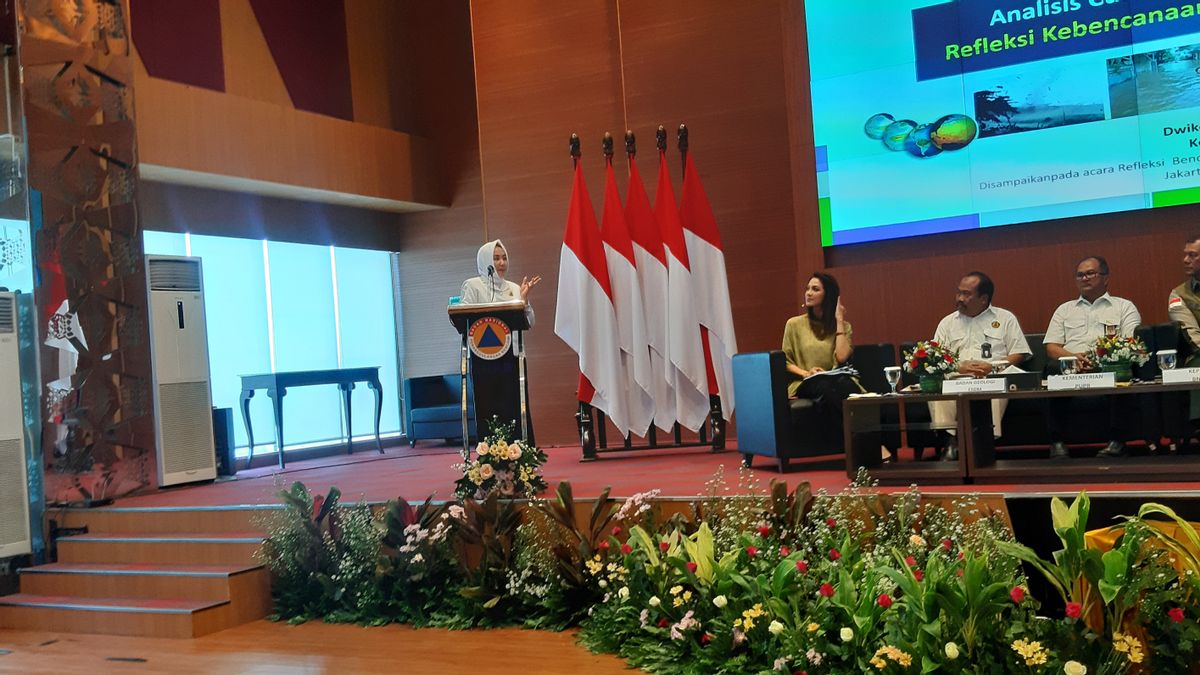JAKARTA - The Meteorology, Climatology and Geophysics Agency (BMKG) predicts that the long dry season that occurred this year may not be repeated in 2020. Because the El Nino phenomenon will not continue until June 2020.
"It is predicted that there will not be a prolonged dry season, as happened last year," said BMKG Head Dwikorita Karnawati at the 2019 Disaster Kaleidoscope event at Graha BNPB, Jalan Pramuka, East Jakarta, Monday, December 30.
This is possible because there is no indication of the emergence of the phenomenon of the difference in sea water temperature between the Indian Ocean, or to be precise, in the southwestern side of Sumatra Island and East Africa. So it is estimated that sea surface temperature in Indonesia will remain normal and tend to warm until June 2020.
This analysis is also supported by data from the National Oceanic and Atmospheric Administration (NOAA) and the National Aeornautics and Space Administration (NASA). So that the BMKG predicts the El Nino phenomenon in 2020, it will not be as bad as in the previous year.
BMKG also predicts, monthly rainfall will tend to be normal. Rain anomalies will occur from the end of December 2019 to the early quarter of 2020. Dwikorita even said, there is a possibility that if New Year's Eve on December 31st, it could rain.
"This is not simultaneous throughout Indonesia. So gradually the rainfall starts to be high in January to March, especially in the southern part of Sumatra Island, Java Island, to Nusa Tenggara, Central Kalimantan, Sulawesi and Papua," he explained.
However, Dwikorita reminded that the stages of the dry season will still occur in parts of Indonesia. The public is asked to remain vigilant about these weather differences, especially for those who live in the Aceh and Riau regions.
The dry season will continue to occur in both regions from February to March 2020 and result in drought and the possibility of land fires. Meanwhile, in other regions, the new dry season will occur from April to October 2020.
"To minimize the impact of the dry season, all parties are advised to maximize the capacity of reservoirs, reservoirs and retention ponds for storing water reserves. This can be done at the peak of the rainy season from February to March 2020, "he said.

BMKG urges the public to often monitor weather forecasts
After describing the weather forecast, Dwikorita then reminded the public to be vigilant. You do this by continuously monitoring the weather forecast info. Because, this way the public will know the weather conditions so that their activities are not hampered.
"This is not to hinder activity, in fact with the weather forecast we will know that usually morning to noon the weather is still cloudy. Then after 14.00 noon it can rain heavily and even whirlwinds. That's based on our data," he said.
Especially for the year-end holiday season like this time, he is sure, checking the weather forecast at any time will certainly help the movement of the people.
Meanwhile, regarding the prevention of extreme weather in the Jabodetabek area, Dwikorita said that the BMKG had provided early information to those in charge and stakeholders to prepare themselves, such as cleaning channels so they were not clogged and cutting heavy tree branches so they would not easily fall.
In addition, he also reminded local governments to pay attention to billboards on the highway. "The heavy billboards must be secured, of course. The roofs of the buildings are strengthened so they don't collapse when hit by rain," he said.
The English, Chinese, Japanese, Arabic, and French versions are automatically generated by the AI. So there may still be inaccuracies in translating, please always see Indonesian as our main language. (system supported by DigitalSiber.id)








